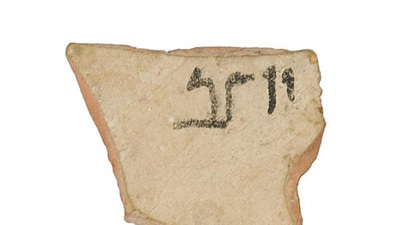At this moment, I, no doubt as so many others, am experiencing a very challenging and difficult time (this, aside from the COVID-19 epidemy of which I do not suffer, Thank God). So far, no solution is in sight, and I often think about the above statement of the Greek Stoic philosopher Epictetus (50 AD - 135 AD), which I find to be of some help. While I am not convinced that Epictetus is correct under all circumstances, his approach would seem to be true in most instances.
Judaism makes an important distinction between situations that are beyond our control and those we can control. The former are something one must accept for they are simply inevitable – and cannot be avoided.
It is important, rather, to concentrate on those matters one can change or influence.
Death is ultimately something we must accept. There is no way to escape death, and yet one can definitely do a lot to delay it as much as possible. Those who are able to do so can often live dignified lives until their very last moments. Indeed, even the greatest among us will experience moments of sadness – we can, after reflection, take control of them, accept these difficult moments and adjust our lives accordingly.
There is more: the famous Jewish philosopher, Franz Rosenzweig (1886-1929), born in a completely assimilated German family, decided to undergo baptism, since he found his Jewishness to be meaningless. However, following a mystical experience in a small Orthodox synagogue in Berlin on Yom Kippur, the Day of Atonement, he became a ba’al teshuva, a penitent, religious Jew. Thereafter, Rosenzweig became deeply involved in Judaism, composing many books and essays on the subject. His most famous, and difficult, work is The Star of Redemption.
Later in his life Rosenzweig suffered the muscular degenerative disease Amyotrophic lateral sclerosis (ALS), also known as Lou Gehrig’s disease, which completely paralyzed him. His remarkable wife, Edith, discovered a way to allow Rosenzweig to continue to write. She would recite letters of the alphabet until Rosenzweig indicated to her to stop, and then she would continue again until she could guess the word or phrase he intended. At other times - Rosenzweig would point to the letter on his typewriter, or he would communicate with her by blinking his eyes.
This whole process is not only testimony to the enormous effort on the side of Rosenzweig, but to his wife’s nearly superhuman love for him in ensuring he could write till his last breath. Rosenzweig died of exhaustion. With a spirit of fighting until it was no longer possible, he returned his soul to its Maker – in total stoic acceptance.
Another example I have heard is that of a Catholic woman in Holland who was crippled. Although I have no affiliation with Catholicism and I am unable to understand its theologies (while I do not deny the wisdom of some of its thinkers and their works, such as Confessions by Augustine of Hippo (354-430), which is an outstanding literary work), this lady told me something I have never forgotten.
She told me that in the summer of 2004 she participated in services in Christianity’s premier Healing Shrine in Lourdes, France. This was when John Paul II, who is known for his many attempts to save Jews during the Holocaust, was pope. John Paul II was once called “God’s athlete” by the media because he was handsome, and brimming and blessed with an enormous amount of energy. He skied, climbed mountains, swam etc. (When he became pope, he ordered the construction of a swimming pool at the Papal Palace of Castel Gandolfo, the papal summer residence outside Rome. When the Roman Curia objected to the expense involved in the construction, Pope John Paul II replied: “It’s cheaper than holding another conclave.” Coming fast on the death of his predecessor John Paul I, after just 33 days, the point was well taken! (See The Rise of Benedict XVI by John L. Allen, 2005.)
In his later years John Paul II became severely ill and he suffered from all sorts of terrible ailments. He suffered from Parkinson’s disease, hip ailments, respiratory problems and arthritis. He was in and out of the Gemelli Polyclinic Hospital where the tenth floor was permanently set aside for his use. (He was ill from 1990 until his death in 2005.)
Seeing an opportunity to utilize his many illnesses to teach his flock, he went to Lourdes’ Healing Shrine and declared himself a “sick man among the sick.” By doing so he became an icon of “meaningful suffering” in the eyes of the Catholic world.
The Dutch crippled woman told me she walked through a crowd of 200,000 people who were using canes, walkers and wheelchairs. When the ailing John Paul II appeared, many identified him as one of their own and the emotional response was electric. He was slumped in his wheelchair, and wincing; his face had become frozen, and he was often confused. “He thereby brought all of us”, said this woman, “to face the reality of decline and death, and demonstrated how to serve God even at that hour. I have never been taught a greater teaching: to fight and to accept.”
True, Rosenzweig and John Paul II were deeply religious people, each with his own totally different, opposing, views – and not all of us possess the gift of seeing life as one long ongoing period with ultimate meaning. Nor do all of us have the privilege to be surrounded by a huge staff, or to have a private hospital and a team of physicians available in one’s most difficult moments like John Paul II had. And few are blessed with a wife like Edith Rosenzweig who was so dedicated to her husband’s mission that it became the center of her life.
However, there is much to learn from these instances: to accept and capitalize on one’s unescapable limitations, and turn them into opportunities of learning and teaching which one otherwise would have missed.
There is one dangerous dimension to this approach – when others misuse this unshakable faith of the patient, saying: “You have to accept it. God has so decided.” One should never say this but always try everything humanly possible to solve individual problems also for the benefit of our spouses, parents, children or friends; of course, without denying one’s own needs!
The famous Rabbi Yisrael Salanter used to say that there is but one instance when one should become an “atheist”: when one’s fellow is suffering. Then one must never say, “God will help”; instead one should act as if there is no God.
Some great Chassidic masters, some say it was the Kotzker Rebbe (1787-1859, would say: “I do not need to know the reason I must suffer, as long as I know I suffer for Your sake.” Beautiful!
But how many of us are able to say this in all sincerity?
The greatest challenge is to have the courage to change those things which can and should be changed, and the serenity of mind to accept those which cannot. And furthermore, to possess the wisdom to distinguish one from the other (based on the Serenity Prayer by Reinold Niebuhr). This is the ultimate challenge.



